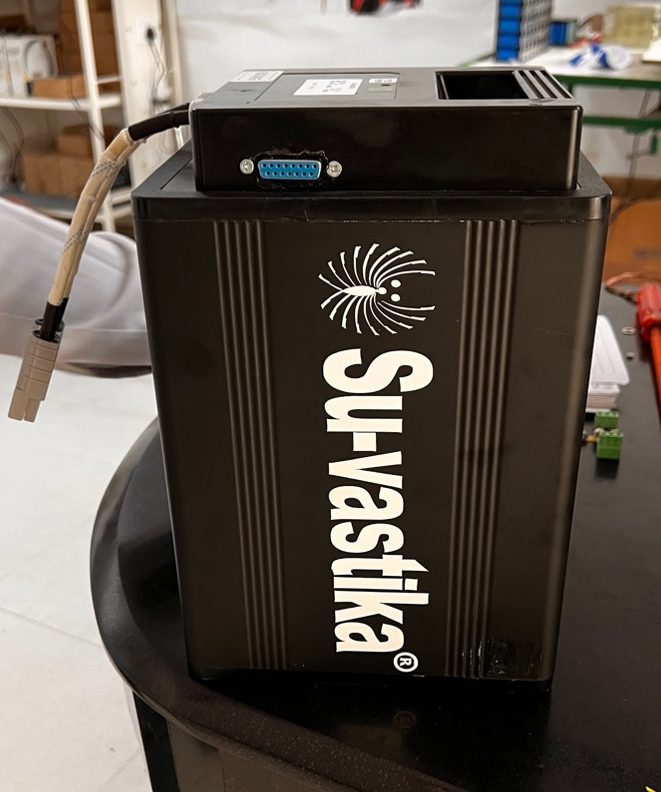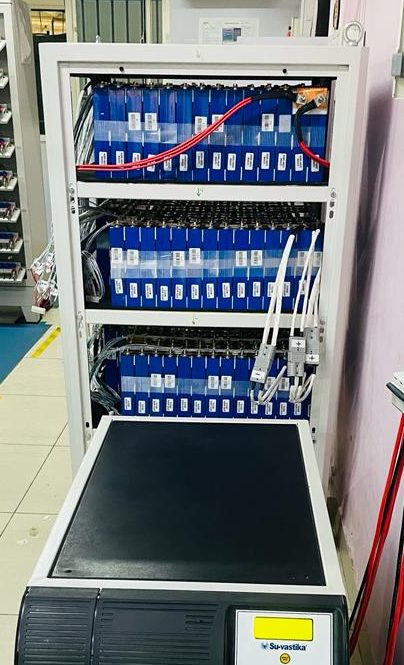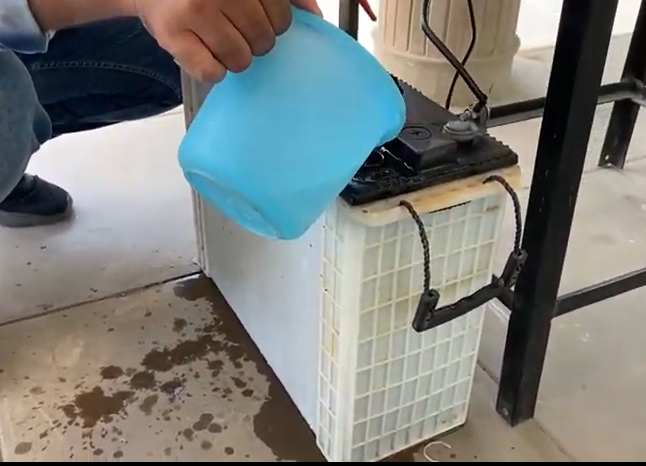Difference between Tubular and Lithium battery
What is the difference between a Tubular and a lithium battery? Let us compare these two batteries and see why the change will happen in the next five years, where the Lithium battery will take over the Tubular Battery Inverter/UPS industry very smoothly.
The life of the Lithium battery compared to Lead Acid Batteries, specially Tubular batteries: If Lithium batteries are charged properly. Low and High batteries are maintained strictly in the Inverter/UPS usage or power backup case. This can last from 10 to 12 Years easily, four times the life of Lead Acid batteries like Tubular and five times the life of SMF batteries as the life cycle of an SMF battery is much lesser than that of a tubular battery.
The Charging Time of Lithium battery Vs Lead Acid tubular battery: This is the biggest factor in favour of Lithium batteries as they can be charged in 2 to 3 hours, and Lead Acid battery, like Tubular battery, takes 15 hours to charge, which is so convenient for any areas where the power cuts take place intermittently. Power goes and comes back. Then the 50 Ah Lithium battery can give three times the backup of a Lead Acid tubular battery. Because 150Ah Tubular battery might give 2 hours back up after charging for 15 hours, and 17 hours are gone out of 24 hours, whereas the 50 Ah lithium battery can give you backup time eight times at least in 24 hours, which can result in 400Ah Capacity out of 50 Ah battery.https://en.wikipedia.org/wiki/Lithium-ion_battery

Tubular Battery Analyzer



1. The Capacity of the battery we get in Lithium Vs Tubular battery: this is the mind-boggling parameter which will be understood by people soon that the Tubular battery comes in C20 Capacity sticker or the Solar battery comes in C10 capacity sticker. The Lithium battery comes in a C1 capacity package. How do we understand this factor?https://suvastika.com/battery-size-selection-in-ups-inverter-for-cost-saving/
2. Clean technology vs Polluted technology: People using Tubular batteries in their homes and offices are breathing Lead fumes because the Tubular deep discharge batteries emit lead-based fumes, which are very harmful to the people consuming them. The lungs are affected by these lead fumes, and children and older people are the most affected. The lithium battery is a clean technology with no fumes or emissions of any gasses. So health hazard is the major challenge in Tubular batteries.
3. Depth of Discharge in Tubular Vs Lithium battery LifePO4: The depth of discharge we can take out from a tubular deep discharge battery is 50%, whereas, from the lithium battery, the DOD can be 98% as this is C1 Battery compared to the tubular battery, which is C20 battery capacity.
4. The power bill for Charging comparison of Lithium battery: As already described, the Tubular Deep discharge battery has 4-stage or 6-stage charging as the charging of a Tubular battery is quite complicated, even needing to do the Temperature Compensation. As making the proper gravity into the battery is not easy. So the backup time will also change on different temperatures if not used with the ATC technology. Lithium battery charging is straightforward and charges in the Bulk Charging stage and a little bit of the Absorption stage for 5 to 10 minutes, and the battery is charged in 2 to 3 hours. In the tubular battery, all these stages waste a lot of energy. On top of it, the trickle charge keeps happening even after the battery is completely charged, which is not required in a Lithium battery. Self-discharge of Lithium batteries is very low compared to the tubular battery.
5. Space and weight of Tubular Vs Lithium battery: The comparison between Tubular and lithium batteries is again a shocking revelation as a 150 Ah tubular battery is 65 Kgs of weight, and you need two people to lift the battery one person cant lift the battery at any cost. The Lithium required to complete the 150Ah battery is a maximum 70 Ah battery, and the weight of the 12.8 V 70 Ah tubular battery is only 9 kgs. One man can easily place the Lithium battery.
6. Maintenance Of Tubular Vs Lithium battery: the water topping in the Tubular deep discharge battery is a headache for anyone maintaining those batteries.






7. The built-in BMS in Lithium and Tubular has no electronic attached to stop the abuse or control cell equalization. One of the major differences is that the tubular battery has no electronic control to control the charge-discharge current and equalization of each cell attached to the battery in series. The Lead acid battery in one of the cells fails because of overcharging, which is the major cause of death. Whereas the Lithium battery cells are continuously getting equalized to maintain the cell balancing, which increases the life of the Lithium battery.
8. Battery life tubular Vs Lithium. The life of the lithium battery in the Inverter/UPS can easily last more than ten years, whereas the life of the Tubular battery will be a maximum of 3 years. So one can easily see the price of Lithium is lower than Tubulae deep discharge battery.
9. Temperature effect on Lithium Vs Tubular battery: The Lithium Iron Phosphate work very well in the temperature range between -20 degree Centigrade to 60 degrees Centigrade, but the best performance range is 0 degree to 45 degrees Centigrade. And Tubular Deep Discharge batteries need temperature compensation between 0 degrees to 50 degrees centigrade, and below zero temperature, the Capacity of both batteries goes down.
10.. Safety: the Tubular battery has no safety mechanism like BMS, which controls the charging and discharging of the battery and stops it from abuse where, as the tubular lead Acid battery has gasses built in while charging and discharging and can explode if not charged properly or not maintained properly. The lithium battery has the BMS buil, which keeps it quite safe, and Lithium LifePO4 is the safest proven technology.




Leave a Reply
Want to join the discussion?Feel free to contribute!